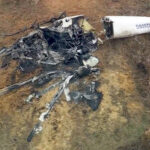Mercury Insurance said it has submitted a filing based on California’s new regulation enabling catastrophe modeling to be included as a factor in ratemaking.
The filing is reportedly the first to use the Verisk Wildfire catastrophe model, which is designed to help estimate the impact of future catastrophic wildfire events.
The Verisk Wildfire Model for the United States was reviewed through the newly established Pre-Application Required Information Determination Procedure. The California Department of Insurance and Verisk announced the review of that model was completed in late July.
The CDI also recently completed a review of the KCC US Wildfire Reference Model Version 3.0, making it the state’s second wildfire catastrophe model.
Once approved, the Mercury filing will allow the carrier to grow its footprint in higher wildfire risk areas, according to the company.
The rate filing calls for an overall average rate increase of 6.9%, which the company said reflects increased inflationary cost pressures and exposure related to catastrophic events such as wildfires.
According to Mercury, the rate increase won’t be allocated evenly across all policyholders, with residents in higher risk areas possibly getting larger increases and customers in lower risk areas could seeing decreases.
Mercury also plans expand existing discounts for homeowners who take steps to reduce wildfire risks, such as clearing vegetation, upgrading vents or using fire-resistant construction materials.
Rising rates and lack of availability have driven the state into a homeowners insurance crisis, pushing people in the insurer of last resort, the California FAIR Plan, and into surplus lines. Surplus lines homeowners insurance transactions were up 119% in the first half of the year from the same period last year, when transactions were already on the rise, according to new data from the Surplus Line Association of California.
The pain inflicted on California’s property market has grown steadily in the last few years after a series of devastating wildfire seasons—CalFire data show that seven of the state’s 10 most destructive wildfires have occurred in the last 10 years. That trend has been followed by numerous carriers pulling back from writing new policies in the state and seeking large rate hikes.
The L.A. wildfires made things worse. The blazed destroyed more than 16,000 structures and killed 30 people. Estimated insured losses from the L.A. wildfires range between $30 and $35 billion.
Several big carriers, including State Farm, Allstate, Farmers, and Mercury, reported paying more than $1 billion in claims from the wildfires. One of those companies is State Farm, which as of mid-June reported receiving 12,855 total claims related to the fires and paid out more than $3.96 billion.
State Farm, which insures roughly one-in-five California homeowners, has asked for a large rate hike, based partly on the carrier’s massive losses from the fires.
The carrier upped its rate request in May, a week after getting the OK for a large rate hike to what the company had originally wanted before being rejected and agreeing to an interim deal for an increase. The wildfire-bitten insurer got approval for a 17% rate increase following billions of dollars in losses from the Los Angeles wildfires and pullback on writing new policies in the state.
A report from a climate activist group says State Farm’s rate increases would cost the average California homeowner more than $1,000. An analysis from the Center for Climate Integrity says that if the additional increase is approved, the average California policyholder will be paying $1,015 more for homeowners insurance in 2026 than they did in 2023.
Catastrophe models are accepted as a part of ratemaking in all states. The Verisk Wildfire Model is already approved by the Nevada Division of Insurance.
The KCC wildfire model has already been accepted for rate filings in 24 other states, according to the Boston-based firm. The firm said the KCC model incorporates the impacts of climate change and accounts for mitigation efforts at property and community levels to encourage the reduction of wildfire risk.
In exchange for being able to use modeling in rate making, insurance companies will be required to write more policies in wildfire-distressed areas.
Topics Trends Legislation Pricing Trends
Was this article valuable?
Here are more articles you may enjoy.


 2 New Jersey Pilots Killed in Helicopter Collision Frequented Nearby Cafe Together
2 New Jersey Pilots Killed in Helicopter Collision Frequented Nearby Cafe Together  Disney Worker Injured Trying to Stop Runaway Boulder at Indiana Jones Show
Disney Worker Injured Trying to Stop Runaway Boulder at Indiana Jones Show  Aon Extends Employment Agreement With CEO Case
Aon Extends Employment Agreement With CEO Case  Four in New Jersey Face Charges in Alleged $250K Travel Insurance Scam
Four in New Jersey Face Charges in Alleged $250K Travel Insurance Scam 

